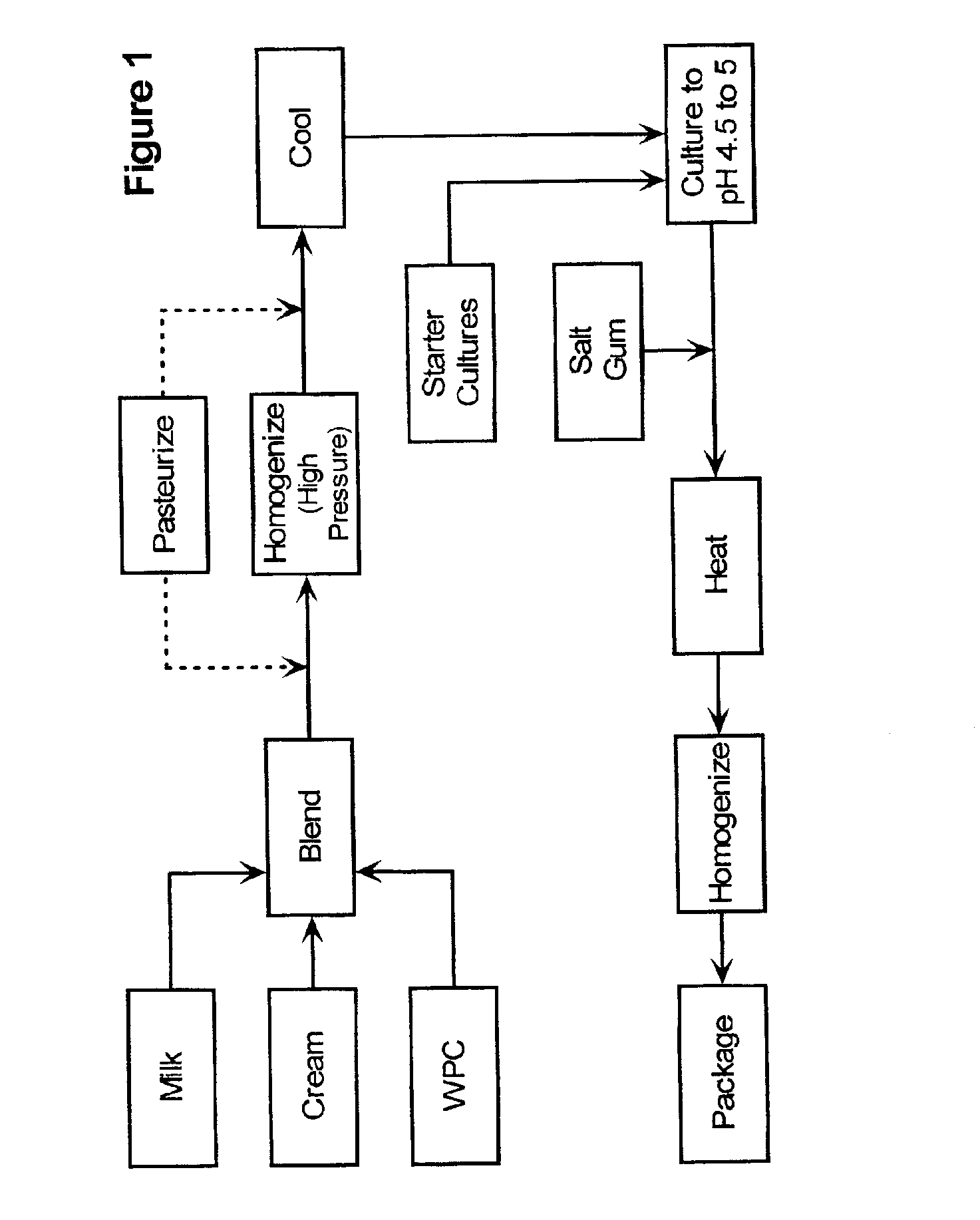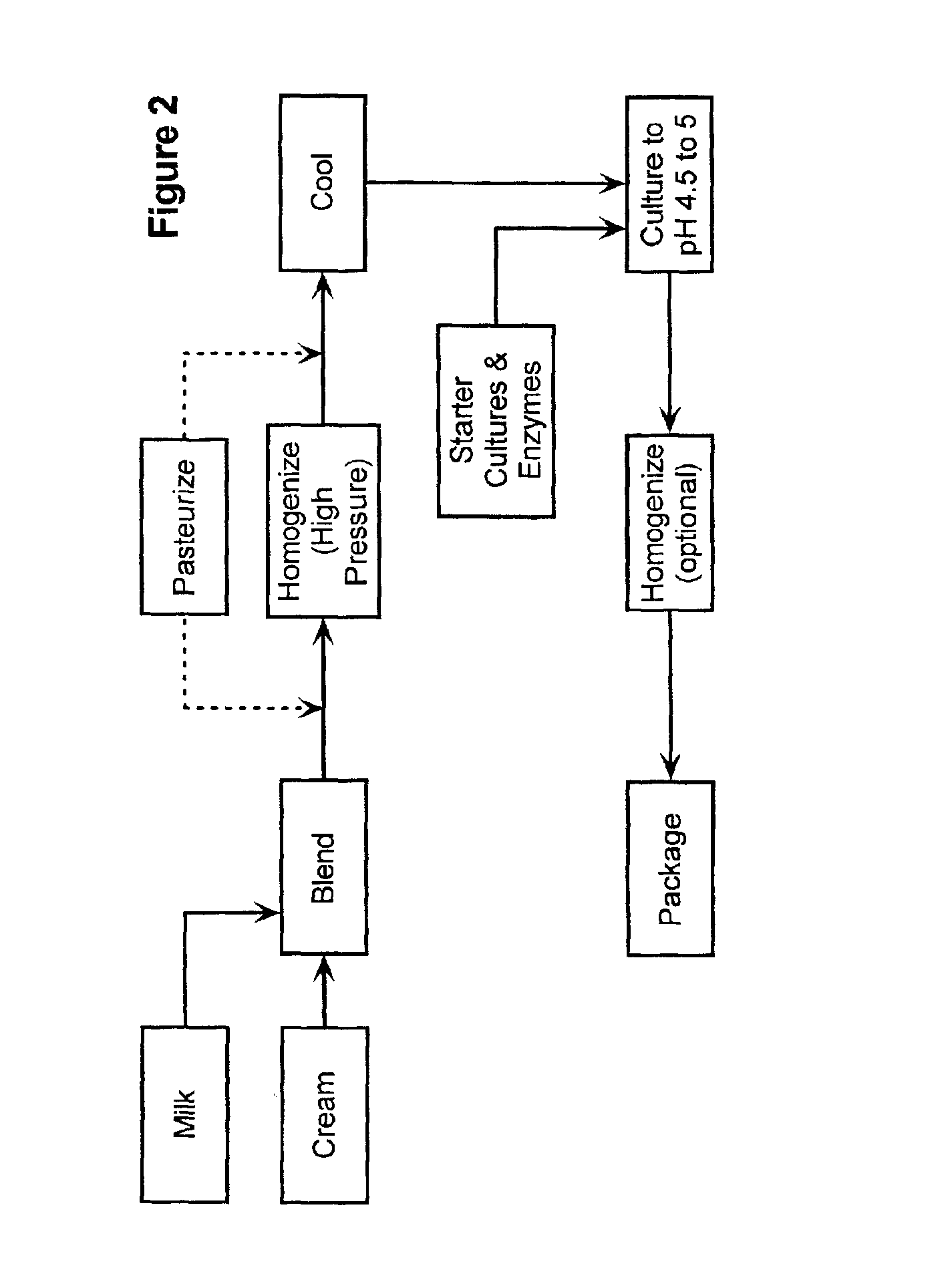Dairy products with reduced average particle size
a technology of dairy products and average particle size, which is applied in the field of superior dairy products, can solve the problems of adding significant costs and logistical complications to the cheese manufacturing process, affecting the quality of cream cheese prepared using emulsifying salts, and affecting the quality of cream cheese, so as to improve firmness, improve firmness, and improve firmness
- Summary
- Abstract
- Description
- Claims
- Application Information
AI Technical Summary
Benefits of technology
Problems solved by technology
Method used
Image
Examples
example 1
An inventive cream cheese was prepared using the general method illustrated in FIG. 1 using the following recipe (based on 100 lbs cream cheese) and was compared with a conventional cream cheese control (i.e., homogenization pressure of about 2500 psi with a whey separation step):
IngredientControl (lbs)Inventive (lbs)Milk97.616.2Cream62.862.0Liquid WPC020.7Dry WPC1.81.1Whey Powder1.20Salt0.70.7Carob Gum0.250.25Whey Removal103.30Cheese Yield61100
Pasteurized milk and cream were obtained locally in a liquid form. Liquid and powdered whey protein concentrate (WPC) were used to standardize the whey protein: casein ratio and total protein content of the mix to the desired levels. The mix was blended using a high shear mixer (Breddo Liquefier) using the following parameters: 140° F. and 7500 / 750 psi (first and second stage) followed by and pasteurization at 178° F. for 18 seconds. The pasteurized homogenate was cooled to 77° F. prior to culturing to a pH of 4.7. The resulting cream cheese ...
example 2
An inventive sour cream was prepared using the general method illustrated in FIG. 2 using the following recipe (based on 100 lbs sour cream) and was compared with a conventional sour cream control:
IngredientControl (lbs)Inventive (lbs)Condensed Whole Milk17.020.2Cream40.431.9Water41.146.4Starter1.51.5
Milk and cream were mixed in Breddo Liquefier, heated to 140° F., and then homogenized using a conventional (2500 / 750 psi) homogenizer for the control sample and a high-pressure (10,000 / 0 psi) homogenizer for the sample. The resulting homogenates were pasturized. After cooling to 72° F., starter culture was added and the mixture was allowed to ferment until the pH was lowered to 4.3.
The control and inventive sour cream were compared with the following results:
ControlInventiveTotal fat (%)18.215.2Total solids (%)25.322.8Protein (%)3.02.8Titratable acidity0.70.7pH4.34.3Process*SepticAsepticHomogenization Pressure2500 / 70010,000 / 0(total / 2nd stage; psi)Pasteurization conditions183° F. / 28 sec...
PUM
 Login to View More
Login to View More Abstract
Description
Claims
Application Information
 Login to View More
Login to View More - R&D
- Intellectual Property
- Life Sciences
- Materials
- Tech Scout
- Unparalleled Data Quality
- Higher Quality Content
- 60% Fewer Hallucinations
Browse by: Latest US Patents, China's latest patents, Technical Efficacy Thesaurus, Application Domain, Technology Topic, Popular Technical Reports.
© 2025 PatSnap. All rights reserved.Legal|Privacy policy|Modern Slavery Act Transparency Statement|Sitemap|About US| Contact US: help@patsnap.com


